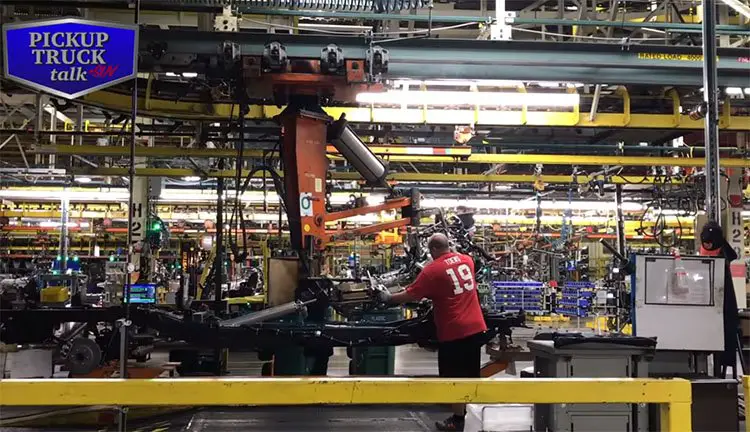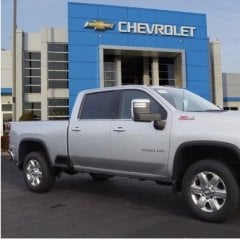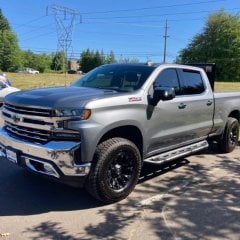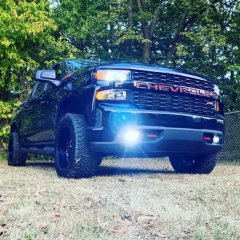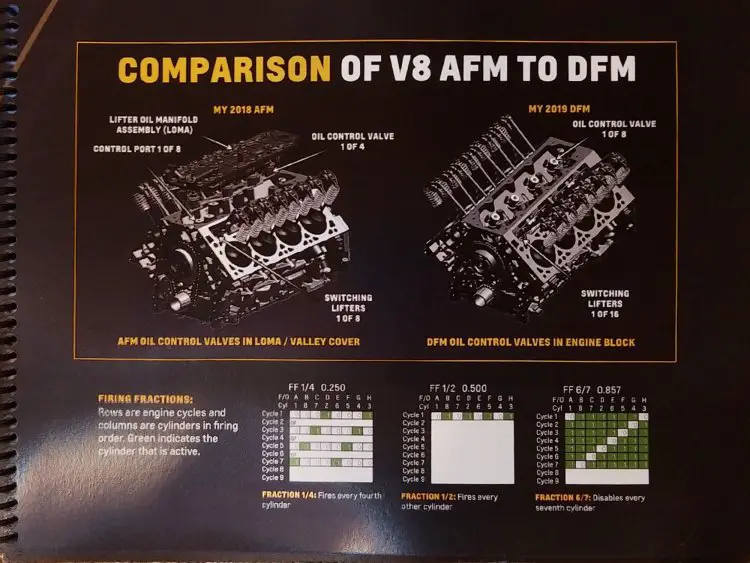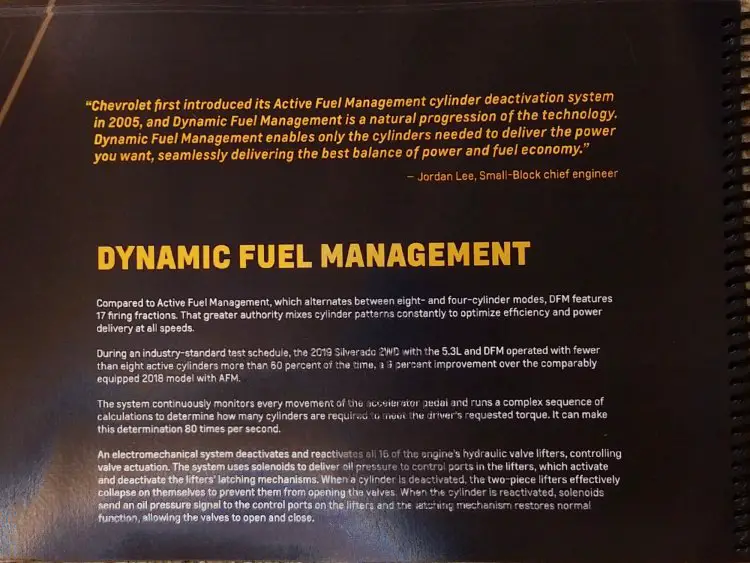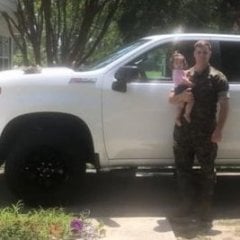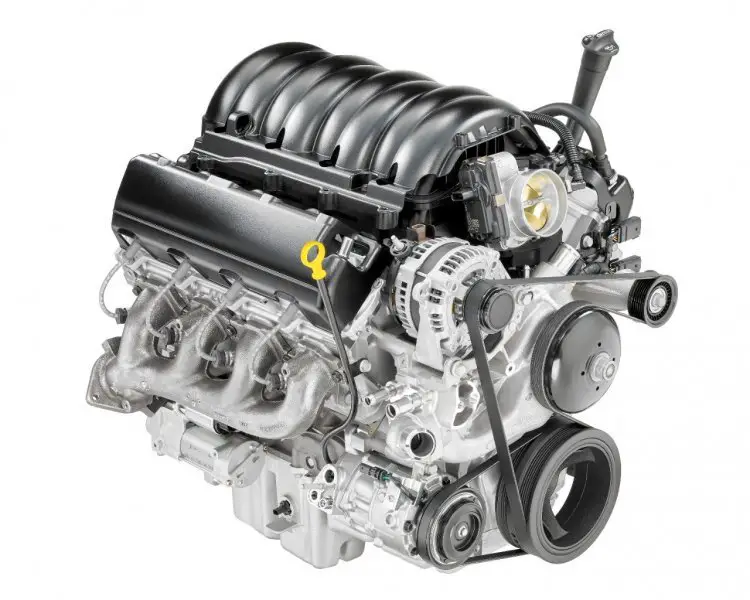Search the Community
Showing results for tags '2019 Silverado'.
-
It's never too early to start talking about the process of shopping around for a dealer, pricing, the ordering process, deposits, and production delivery times. Although we're still months away from orders being accepted, this thread is meant to be a place where everyone can check in and share their experiences as they go through the process. I'm also going to document as many important dates in this initial post as I can. I'll attempt to keep everyone up to date on start of production, any ordering limitations, and when the ordering system will go live. NEW UPDATES AS OF: April 25th, 2018 T1XX- 2019 Chevrolet Silverado and 2019 GMC Sierra - Important Ordering / Production Dates Pre-Production: NOW - Captured Test Fleet Production Confirmed as of March 31st. Fleet Order Entry Avaliable On Crew Cab: 4/26/18 Double Cab: 6/21/18 Regular Cab: TBD Retail Initial Consensus Month Crew Cab: May 1st Double Cab: August 1st Regular Cab: TBD Initial Dealer Order Submission Process (DOSP) Crew Cab: 5/17/18 Double Cab: 8/16/18 Regular Cab: TBD Production Start Up For Dealer Delivery Crew Cab: Quarter 3 - July/August/September Double Cab: Quarter 4 - October November December Regular Cab: TBD 2019 Chevrolet Silverado Start Up Schedule 2019 GMC Sierra Start Up Schedule This post will be updated whenever new information becomes available. Please contact me if you can help clarify any of these dates.
- 1,672 replies
-
- 2
-

-
- dealership
- 2019
-
(and 9 more)
Tagged with:
-
Zane Merva Executive Editor, GM-Trucks.com 9/11/2018 The saga of our custom ordered 2019 Northsky Blue Metallic Silverado LTZ is no closer to an end but at least now we are starting to get some details as to what exactly is going down. If you're not caught up, read up on Part One and Part Two. Since our last update we've been in touch with our dealership and the Chevy communications team. Both have shed some additional light on our truck's situation. Our dealer, after checking with the Northeast Regional Sales Manager can confirm that our truck is being held for quality assurance. That means this is not a shipping issue after all. The regional manger doesn't know what the quality hold is all about nor can they do anything about it. Chevrolet has also been working hard to figure out why our Silverado hasn't left the plant. A Chevy employee talking on background confirmed two larger scale issues the plant has faced during the first weeks of startup. One involved the placement of doors by a factory robot and the other issue was a batch of wavy windshields. The door issue was apparently fixed early on but the windshield issue hit a larger group of trucks that are still being fixed today. Those trucks were built with those wavy windshields anyways because replacement glass wasn't available in the "Just-in-time" world of automotive factory production. Plus, you can't store a truck without it being weather light. So, an unknown number of vehicles are sitting outside the factory while 350+ people go over them with a fine comb, fix issues and replace windshields as parts come in. Does that mean our truck is waiting for new glass outside the factory? Well, we're not sure. But, good news, we're talking to the man who will know exactly what's up with our 2019 LTZ later this week, Tim Asoklis, Chief Engineer. He'll fill us in our not only the status of our Silverado but give us the inside scoop about the quality control measures Chevrolet is implementing while they start up building the all new Silverado. We'll keep everyone updated after we interview Tim and hear more from Chevrolet.
- 5 replies
-
- 2
-

-
- 2019 chevy silverado
- 2019
-
(and 3 more)
Tagged with:
-
Zane Merva Executive Editor / Publisher, GM-Trucks.com April 12th, 2019 A few months ago we started to notice something on our 2019 Silverado that no owner of a brand new vehicle wants to see. Rust. Specifically on our rear bumper, just around the plastic step. It wasn't huge and didn't spread very far from the edge... but we couldn't stop noticing it. There was no excuse for rust on a 8 month old vehicle with less than 10,000 miles. The photo above shows the minimal but noticeable rust patch. It was even happening on both sides and in the same place. The issue seemed odd. Unfortunately, we've just been too busy to bring it by to our local dealership for them to look at. Lucky for us, our procrastination has paid off, because in the time between us first noticing the problem and getting off our lazy asses to drive to our dealer, GM has released a TSB about this very issue. It appears that on most of the early trucks, production of the bumper was completed incorrectly. The steel assemblies should be bent into shape then chrome plated. But that didn't happen in a small part of the early bumpers. The supplier bent the area around the side step after the bumper was chromed. The new folds in the steel damaged the chrome, cracking it and making the truck susceptible to rusting. What's the fix? If your bumper is rusting already, Chevy and GMC will replace it. If it has not yet started to rust, they will apply an automotive grade wax/sealant to prevent rust in the future. If you're unsure if your 2019 has this issue we suggest doing the following: 1. Give your truck a bath for heavens sake! 2. Clean the rear bumper step area with a hose or pressure washer. Front and back! We find lots of dirt collects behind our step in the bumper assembly. 3. Inspect around the foot step area and behind the foot step area. We found rust in both areas! 4. If in doubt, wait for it to rust and kindly ask for a new rear bumper. Our dealership, Banks Chevrolet in Concord, NH has been great getting our rust issue fixed. Our service adviser Justin has kept us in the loop during the repair and gave us a loaner Silverado LT while they have our truck. He even made sure any other outstanding service updates are also applied to our LTZ while it was in the shop. As it turned out, there were six open issues that needed addressed. Here's the official Service Update you can print out and bring to your dealer when you take your Silverado or Sierra in for service.
- 7 replies
-
- 1
-

-
- 2019 silverado
- 2019 sierra
-
(and 9 more)
Tagged with:
-
Zane Merva Executive Editor / Publisher, GM-Trucks.com April 26th, 2019 Our friend Tim Esterdahl from Pickup Truck and SUV Talk got an awesome chance to tour the Ft Wayne Assembly Plant. That's one of the two plants that produce the 2019 Chevy Silverado and GMC Sierra. Tim's tour was narrated by GM's Executive Chief Engineer Tim Herrick. Sit back and enjoy this look inside the manufacturing of the all new Silverado and Sierra. And if you like what you see, subscribe to Tim's YouTube Channel.
- 6 replies
-
- 1
-

-
- 2019 silverado
- 2019 sierra
-
(and 4 more)
Tagged with:
-
The Merva Brothers Founders, GM-Trucks.com February 27th, 2019 When you take delivery of a brand new 2019 Silverado, you'll be faced with a few choices beyond which trim level or options you want. You'll also be asked which accessories you want to be installed on your truck before it rolls off the sales floor. Most GM accessories can even be factored into the sale price and financed. So, we're setting off to try out some of these certified accessories that are available for the 2019 Chevrolet Silverado. Our goal is to let you know if they are worth the cash or if you should take a pass. We've always loved the look of a blacked out bowtie and the idea of one that lights up seemed too cool to pass up. So we headed to our local dealership and ordered the 2019+ Illuminated & Blacked out front bowtie. Here's how it went and what we think. What is it? Chevrolet Illuminated Grille Bowtie Emblem in Black Part Number: 84069488 MSRP: $275.00 Manufacturer Website: https://accessories.chevrolet.com/ Main Features Doesn't effect your factory warranty Direct replacement for the standard gold bowtie Same quality as original parts Wiring harness is plug & play and matches factory wiring Here's the bowtie and grille as it came from the factory. Installation The first step to install the illuminated bowtie (or the non-illuminated black bowtie) is to remove the front grille. The grille on our LTZ was easy to take once we understood how it was fastened to the body. The entire process runs around 30 mintues We'll be covering how to remove the grille on the 2019 Silverado in detail soon. A plastic trim removal set makes this process much easier. After a little bit of pulling and careful prying, the entire front grille section comes off. Note the grille can be removed without having to take off any body panels or reach under the vehicle. This is a huge improvement over past Silverado generations, which required more disassembly to access the grille mounting hardware. The grille is a solid unit. Switching it out with another trim level's grille would be easy at this stage. This is also a good time to clean up the grille. To remove the factory bowtie, release four tab clips on the backside of the grille. One is inside of the support post where you will also run the bowtie's wiring harness. We popped out the bowtie and cleaned behind it before installing the new one. It was filthy underneath! The included wiring harness plugs into the driver's side headlight harness. It then snakes through the radiator opening and clips to the bumper. We found it easier to run the wire through the grille and connect it to bowtie, THEN snap the bowtie to the grille afterwards. Attempting to plug the harness into the bowtie after it is mounted on the grille turns out to be extremely difficult. We tested the bowtie to make sure it lit up properly before we attached the grille back onto the truck. Our Impressions Installation of the illuminated bowtie turned out to be pretty easy provided we used the right tools. Our plastic trim kit was invaluable during the process, allowing us to pry and remove pieces without scratching them. The kit also didn't come with instructions, so make sure to ask your dealer for a set of them when you buy it. They can print it out for you. The quality of the bowtie is on par with other factory parts and matches accordingly. The wiring harness looks similar to those already running under the hood giving the final fit a factory feel. So while the look and feel of the product is excellent the actual performance of the illuminated bowtie left us wanting more. We expected an illumination effect with a similar brightness to our DRL lighting. Instead, the bowtie glows a dull white at light. During the day or bright sunlight the illumination effect disappears completely. We do appreciate that the color temperature of the bowtie matches the headlights and DRLs. The MSRP of $275 is steep for the eventual lackluster performance. Excellent build quality, plug and play performance, a factory look, and no warranty interference offset the price to an extent. If you want a quality replacement for your gold bowtie that adds a little more flare to your 2019 Silverado, the Illuminated Black Bowtie could be right for you. If you're looking for a bright centerpiece that stands out with the same intensity as your other lighting, this may not fit your bill.
- 6 replies
-
- 3
-

-
- accessories
- chevy
- (and 6 more)
-
Now that owners are taking delivery of the new 2019 Chevy Silverado and GMC Sierra, I thought a quick reference guide to common routine maintenance items would be beneficial to us all. If you have information that you'd like suggest be added to this topic, just post below and I'll update this first post with any and all new/updated information. 2019 Chevy Silverado & 2019 GMC Sierra Routine Maintenance Quick Reference Guide -------------------------------------------------------------------------------- Digital Owners Manuals 2019 Chevrolet Silverado: 2019_Chevy_Silverado_Owners_Manual.pdf 2019 GMC Sierra: 2019_GMC_Sierra_Owners_Manual.pdf Oil Changes 2.7L(L3B) Capacity: 6.0 Quarts AC Delco Oil Filter: PF66 / 55495105 Drain Plug Size: TBD 5.3L(L84) & 6.2L(L87) Capacity: 8.0 Quarts AC Delco Oil Filter: PF63E / 19330000 Drain Plug Size: 15MM or XX Torx Engine Air Filters With High Capacity Air Cleaner: A3244C / 84121219 Without High Capacity Air Cleaner: A3246C / 84121217 Interior Filters Passenger Compartment Air Filter: CF185 Wiper Blades Drivers & Passenger Sides: 55cm / 21.7 Inches - GM Part Number 23417074 Spark Plugs 2.7L L4: 12688094 / 41-106-IP 4.3L V6: 12622441 / 41-114 5.3L V8 & 6.2L V8: 12622441 / 41-114 Fuel Tank Sizes Standard / Short Box (Gas & 4WD Duramax): 24 Gallons Standard & Short Box (2WD Duramax): 22 Gallons Automatic Transmission Fluid 6-Speed: DEXRON-VI Automatic Transmission Fluid 8-Speed: DEXRON-HP Automatic Transmission Fluid 10-Speed: DEXRON ULV Automatic Transmission Fluid (GM Part Number 19352619/Canada 19352620) Transfer Case Fluid All Models: 1.6 Quarts DEXRON-VI Automatic Transmission Fluid Wheel Lug Nut Torque All Models: 140 lb-ft / 190 N-m
- 21 replies
-
- 15
-

-

-
I keep hearing an interior rear cabin rattle noise when hitting bumps or rough roads. Sounds like it is coming from the interior rear cabin wall were the rear mirror is located. Has anyone experienced this issue? The second rattle noise is coming from the driver side seat belt pillar or door. The rattle noise almost sounds like plastic hitting plastic. Any ideas or has anyone experienced this?
- 3 replies
-
- rattle
- 2019 silverado
-
(and 1 more)
Tagged with:
-
Thom Cannell Contributor, GM-Trucks.com November 26th, 2018 Out of the gate you have to be asking the same question as we, “A four-cylinder engine in a truck? My Silverado?" Forget that the engine is rated at 21-combined EPA fuel economy rating, similar to base V-6 engines from Ford’s (3.3.L) and Ram (3.6 with a light hybrid system). Forget that the all-new 2.7-liter engine makes more power and torque than the LV3 4.3-liter V-6 and has accumulated over one million test miles in development. Just forget it…But…Like you, we stumbled over the entire concept. For answers to what some in the industry see as a profound mistake, we turned to those directly involved in its inception since a pen was put to paper, more likely a stylus set to a digital tablet at GMs Global Propulsion Systems in Pontiac, Michigan. Read Thom's 2019 Silverado 2.7L First Drive Impressions Here Kevin Luchansky is the assistant chief engineer for the new 2.7L turbo and formerly was the group manager over all valve train and cam drives. Our interview began with his statement, “This valve train is, we believe, industry leading and industry first.” He is, of course, referring to the Tripower system of cylinder deactivation that lets this engine run on just two cylinders. We’ll get to that. A very happy and proud Kevin Luchansky, a critical member of the 2.7-liter engine team. Since pen was put to paper, development has taken approximately five years, three years since metal, and it was specifically developed as an all-new truck engine from inception. Our first question was what you’d ask, “Kevin, why a four-cylinder in a light-duty truck?” That’s a good question,” Kevin responded, “and it’s all about efficiency. A few years ago we started to look at how to make the most efficient, most fun-to-drive package we can offer our customers, … and to provide what we think the customer would want. This four-cylinder (engine) provides us with excellent torque response. On this engine torque is near instant, less than two seconds at 1,500 rpm is very, very good. In order to accomplish this, we looked at several things. The fact that you've got big cylinder displacement allows us to design the dual-volute turbo that we have, keep the (exhaust) pulses separated and allow the turbo to spool very quickly. Also, we were able to package the turbo on the four-cylinder in an ideal location. It's mounted sort of midway up on the engine and directly in the center. If you know much about engines and exhaust systems, effectively we had equal length from every cylinder to the turbo.” We asked about the competition, which is a hard fact. “This engine is the base engine on the LT, the new RST and competes with Ford’s 3.3L and Ram’s 3.6L. This engine provides a lot of torque down low, much more than the competition. We're excited for our marketing-drive events where folks can compare those applications, because this (powertrain) is significantly more powerful down low and is fun to drive because of massive torque down low.” Note that there remains confusion about this motor versus Ford’s 2.7-liter. Though of similar displacement, GM’s engine was designed as a base engine for light duty trucks. Ford’s is a premium high-performance motor. Apples and oranges. The new engine had to meet objectives in fuel economy, power, weight saving. After all, an engine program costs tens of millions of dollars. The new motor is 80 pounds lighter than the 4.3-liter V-6 engine it replaces. That motor will remain available as the base engine in Work Trucks. “We feel we are offering customers great choices with all the powertrain combinations we have. We provide six different powertrain options starting with the 4.3L V-6 and an AFM version (8 cylinders/4 cylinders) version of the 5.3L for the work truck options. Then we step up to the LT, with the 2.7-liter and 8-speed, and you can upgrade to the 5.3 with Dynamic Fuel Management where engine runs on eight cylinders down to two, whatever it needs for optimum displacement and paired with the 8-speed transmission. Then the 6.2-liter paired with the 10-speed in the upper versions like Trail Boss, and 3.0-liter diesel in some models.” One of the prime directives for the new engine was durability. “I'd like to talk about some of the hardware in the 2.7-liter, from a durability perspective. This engine is not a car engine we've taken and put a turbo on to make a lot of power. This engine was specifically designed for this application, for these cylinder pressures, a lot like a diesel engine. If you think about diesel engines, there are four-cylinder heavy-duty diesel engines available. This engine was designed similarly. If you look at the details, the hardware is similar to what you'd find in a light-duty diesel. Like the piston, which has a cast iron ring carrier that holds the top ring; that's much different than a standard naturally aspirated engine. That cast iron ring carrier can handle the high pressures that a downsized turbocharged engine produces, and makes the piston very durable.” Pistons use a cast-in iron top ring carrier for durability against high in-cylinder pressures. It’s noticeable as less reflective in the chromed display cutaway. Kevin says the program spent good money on seemingly small things, like PVD coated rings. Physical Vapor Deposition coatings are very hard coatings that reduce wear. Piston crowns in the 2.7-liter are 100-percent machined for long-term durability. “The point I want to make is that, in terms of rotating and reciprocating parts is, there was no expense spared in making this a very durable engine. For instance, this is the strongest connecting rod we've ever designed for a gas engine, a tri-metal design. It has a forged steel crankshaft, and rod and main bearings are select-fit, as seen in many light-duty diesel engines. This is for excellent wear resistance and debris resistance. There was no holding back on picking the best parts the industry has to offer.” By now you’ve likely looked at some of the power and torque charts. Torque holds at nearly 90-percent almost to the red line, with matching horsepower. “It holds on pretty good,” Kevin responded. “It makes 310 horsepower at peak, but doesn't really roll off dramatically. That makes it fun to drive, very linear.” Though its published "time-to-torque" of two seconds seems long until you count “One and Two”, it’s not much different from other engines. “Let me explain. Time to torque is an industry standard test for turbos, where you hold the engine at 1,500 rpm on a dyno and don't allow it to go up in speed. You go from zero throttle to maximum and start the count. Then you count how quickly the engine achieves 90-percent of torque. It's (a test of) how fast the turbo responds, as 1,500 rpm is where the engine spends a lot of time in its operation. The best way to think of it is, with a manual transmission and you stepped into the pedal, how fast to you get torque. Two seconds is pretty quick.” Of course this introduces questions about the dual-volute turbocharger, which is a technology sometimes seen in diesels, and with a different design than other twin-scroll turbos. “Response is all the dual-volute turbo, one Borg Warner has just released and is an industry first application. Dual-volutes are, effectively, two chambers or two separated exhaust "screws or scrolls". What you see is the integrated exhaust manifold, which does a few things for us. One is provide heat, taking heat away from the turbo when it begins to get hot. That helps us with efficiency at high loads, like towing. You can see that we've paired the center cylinders together, so cylinders two and three are paired, then cylinders one and four are paired together. What that does is make equal firing order (firing order is 1-3-4-2) so you get, basically, even pulses and they are completely separated all the way to the turbine wheel, and we've separated them as far as possible, 180° apart from one-another. That's what the industry first really is. There are dual-scroll turbos that exist in high volume, but they come together at the same point at the turbine wheel, which means you can have exhaust gas bleed over from the cylinder that's firing to the cylinder that's not firing. Keeping them separated as far as we have done provides a very strong pulse hitting the turbine blades. That's how we get the fast spooling; it's pretty neat!” Borg Warner’s dual-volute turbo uses fixed geometry instead of a variable (VGT) design. The ducts, one inside the other, wrap around concentrically with the inner channel wrapping half way around before its gasses hit the turbine wheel, the outer volute wraps an extra 180° before its stream of gas strikes the turbine. “For example, if you put your two fingers together, that's what a typical twin-scroll would resemble, each dumps into the turbo and you can have cross talk,” Kevin explained. “That reduces efficiency as cross talk reduces gas pressure to the turbo. Also, this turbo is very aerodynamically efficient at low rpm.” “What I can't stress enough is that we have focused this engine on low-speed torque delivery. You should be impressed with how much torque is available, and that gets back to efficiency and drivability. If you have lag, you'll press on the gas pedal more. If we provide instant torque the driver doesn't go as deeply into the throttle, which produces better real-world fuel economy. Our new engines are focused on low-speed torque delivery. The big four-cylinder engine arrangement allows for good gas flow separation and equal lengths to the turbo - it's harder to do that with other engine architectures. By this time we were itching to talk about the novel valve train, which GM has called Tripower (when we first heard that name we thought, Pontiac’s three two-barrel carbs?) So, Kevin, what is the new Tripower? It's simple in concept; a single pin shifts the cam's lobes to produce differing lift profiles. What we've done is, couple cylinders one and two and cylinders three and four, so the first are on one slider in this four-valve overhead cam engine. There are three lobes, the high-lift lobe, a low-lift and a no-lift lobe (Note that cylinder one is the cylinder that never de-activates so it has only low-lift lobes). Between the lobes is the shifting groove geometry. We have two pins in the actuator, one moves in one direction, the other in opposition. The way the pins work, one pin drops in and shoves over one lift, the other pin drops in and moves to the next. So, in two cam rotations we can go from high-lift to AFM cylinder de-activation. The first rotation would go from high-lift to low-lift, the next rotation would go from low-lift to AFM. It's extremely fast. We can be in AFM for fuel efficiency, and if the driver steps into the throttle we can get to high-lift within two rotations and at the same time the turbocharger is spooling. Within a few seconds the engine goes from fuel miser to making peak torque. It's really neat and seamless to the driver. The changes are imperceptible. It's simple, and robust.” Kevin points to one of two of the electronically activated fingers that move cam lobes into position for, either high-lift, low-lift, and no-lift, the later for Dynamic Fuel Management. GM is maintaining its own control over the system, the camshaft is machined in-house, “from billets of the best steel money can buy. A neat process and very robust parts and they're like jewelry when you see them on someone's desk.” Moving along, we asked about thermal management. It seems most manufacturers are using electric pumps for power management and variability. “For the 2.7, it all starts with an electric water pump. We're able to control it from basically zero pump speed to maximum. The pump is completely decoupled from the engine, which allows us to flow what the engine and other components require, including cabin heating. Turbo placement is important; the pump is down low relative to the turbo, which we'll get to. The dual-volute turbo is cooled by oil, and by water. The water is either moved by thermocycling, or pumped. Lot of people have had experience with older turbos, and our engine has both oil and water-cooling. What is neat about the four-cylinder engine and turbo placement is, you can see there is a feed line (water) that goes in to the turbo and out of the turbo and they head upward. That provides natural thermal cycling. If that's not enough, we can turn the pump on to keep the turbo cool. 80's turbos didn't have coolant, only oil, and there was lots of oil coking issues. We've designed this engine for a truck, and the devil is in the details. We paid attention to issues like cooling to drive durability.” If you’re into deep tech, or run a parts department, the pump is a brushless DC pump, and completely controlled by the ECU. Kevin says the system, the block and the head, are completely separate in their coolant systems, so, a split cooling system. “When the engine starts, there's a lot of heat in the integrated exhaust manifold. We have a pipe directly off it and we use it for exhaust heat recovery. From an efficiency standpoint, we heat the oil in the transmission and engine to get them rapidly up to operating temperature to reduce friction. What that means for the driver, it makes the engine and transmission hotter, quicker, for friction reduction, cabin heat and emissions control. Though not part of our discussion, the oil cooler is water cooled. The other thing the pump allows us to do is over-cooling unrelated to the engine speed. For instance if you're running at a light load and suddenly tip-in with the throttle and ask for a lot of torque, we can quickly force coolant at a faster speed than if the pump was attached to the crankshaft. We can overcool the cylinder head, forcing coolant into the hottest part of the head, and in turbocharged engines that reduces knock, an efficiency enabler. Remember, this is an 87-Octane engine running at 10:1 compression ratio, high for a turbocharged engine.” Injection pressure is 3,000 psi as the industry moves to higher and higher pressures. It uses mechanical (solenoid) injectors that can deliver multiple injections. There’s also a fully variable oil pump, which means it is always right-volume for the given engine condition. It's controlled by the ECU to deliver the correct oil volume under any condition. And, we confirmed that the block is high-pressure die-cast aluminum with cast-in iron liners and made in-house. The cylinder head is aluminum from a semi-permanent mold, and also made in-house. “It's all machined in-house and the engine is built in Spring Hill, Tennessee. There’s a lot of USA content in this engine.” Some of the engine's technologies focused on City fuel economy, as well as high-load conditions. “The combustion system is designed for either condition and allows us to run 87-Octane fuel. Stop-Start works well for city fuel economy, as does as Active Fuel Management and Active Thermal Management. Hidden are the friction reduction steps we've taken like the electric pumps, select-fit tri-metal bearings and a low-friction roller chain, driving the camshafts. That’s for durability, and it's relatively immune from stretching.” The engine uses driven chains to operate cams. No cogged belts for durability and long life. One other comment on durability; we run the same durability schedules as any small-block truck engine because it is a truck. Don't think we skimped on durability testing; it's as durable as the legendary small block. What we did not know prior to our interview, Kevin was the architect on the engine, putting the first lines on paper five years ago. "This was one of my ideas, and they said why don't you go and execute it." Kevin, we’re honored to know you.
- 78 replies
-
- 2
-

-

-
- deep dive
- gms global propulsion systems
- (and 9 more)
-
2019 Silverado high country truck with a gentle 42,000 miles…. Babied. Shift to park message displayed, was difficult to get the massage and the “dining” to go away. Cost me $341 to have it fixed, the dealer said GM helped $ome.. they said 30% with the cost. I’m a couple months outside of the 3 year warranty… lucky me. I feel I shouldn’t have had to pay a cent ….($70K Truck!). But they have trump and you pay… and get screwed…. without even a kiss… even if you own a C7 Corvette. Actually, this problem showed up occasionally / rarely, about 2 years ago… I sort of ignored it as it seemed to always go away. But not recently, last two weeks every time I’d stop the truck. My mistake was not taking a photo of the display two years ago…. Possibly I could have had GM cover the repairs…take note. They replaced the entire “Transmission Control Assembly” (TCA), as you all know most all of today’s dealer mechanics don’t fix anything… they just replace parts. The TCA looks like it located inn the upper part of the steering column connected to or very close / connected to the shift PNRDL lever. See the photos, it appears to me the problem is /was in the bent micro switch lever (flimsy) interfering with the metal frame of the TCA. I believe replacing the $10 micro switch would have solved the problem. If the replaced one is like the old TCA, likely I’ll be replacing it in a few years. I can’t help in how to access the TCA, but though you might like a couple of the photos of the unit.
-
I was adding new license plate lights and accidentally removed a parking sensor it’s been extremely hard to put back any advice.
- 1 reply
-
- help
- 2019 Silverado
-
(and 1 more)
Tagged with:
-
I did not want to be the first to post in this section, however here I am. I took my truck to get an xpel and ceramic coat quote and lone and behold we found some paint defects. The worst being the hood. It looks like there was either dirt in the paint, a run or both on the front of the hood. Second is multiple areas where the bed liner material was over sprayed onto the bed side. I dropped it it off to the dealer yesterday, the entire hood is being repainted and the bed liner material is being removed. Having the hood hood repainted one week after ownership isn’t exactly ideal, but may be a blessing. The factory clear coat is now water based, which is soft. There is a good chance that the repainted hood will have a harder finish.
-
I recently looked up recall information on my 19 Silverado on the GM website https://my.gm.com/recalls as well as Chevy https://my.chevrolet.com/recalls and to my surprise, my vehichle description has recently changed and is now incorrect. These sites state "Currently, there are no recalls or programs associated with your 2019 Chevrolet Silverado LD Crew RST/LT-T1" My Silverado is clealry the new model, however, is now listed as an LD by GM. When searching outside vin checkers/decoders the vehicle comes up as it should (2019 Chevrolet Silverado 1500 RST Crew Cab 4WD) so it seems only GM/Chevy have now listed my new model SIlverado as an LD. Has anyone else seen this with their 2019?
-
I installed a Cold Air Inductions intake system on my truck and took it to a dyno to see if it made power... surprisingly it did lol...
- 19 replies
-
- cold air intake
- intake
-
(and 3 more)
Tagged with:
-
Zane Merva Executive Editor, GM-Trucks.com 10/30/18 Day one of SEMA 2018 is almost already in the books and we've barely made it through the South Hall (which houses the Truck/Off-Road section) trying to get our eyes on every customized 2019 being shown inside exibitor's booths. There's no way we'll see everything but what we have seen already is impressive. Accessories for the all new Sierra and Silverado are coming out in force, even if the trucks are still trickling into dealerships. Although the new fullsize pickups are GM's hot new thing, the automaker has not made it a focus of this year's show. That means, while we're seeing a ton of 2019 Silverado and Sierra, there are 2x as many 2019 Dodge Ram and 5x as many Jeep Wranglers. Here's what we've seen so far. We'll add more photos to this thread as we take them.
-
Hello. I’m new to this so any help would be appreciated. I have a 2019 Silverado Custom Trail Boss. I recently saw someone on social media who upgraded the entire interior of their Custom Trail Boss with High Country interior. My main question is about how I go about putting a new High Country cluster in my custom trail boss. I’ll also need the upgraded steering wheel with the buttons on the right side to toggle through the screen. Do I need to get it programmed to work? If so, where can I get that done? Any information on this topic will help me a lot because I can’t seem to find much information anywhere on the internet. Thank you very much for your time. I appreciate your input.
- 14 replies
-
Zane Merva Executive Editor, GM-Trucks.com 5/18/2018 As it turns out, the leaked figures for the 2019 5.3L and 6.2L V8 engines wasn't far off. That's the good news. The bad news is the SAE certified horsepower and torque will match 2018's numbers exactly. But that doesn't mean the 2018 and 2019 engines are the same. Instead of the 2018's Active Fuel Management, which allows the engine to switch between four and eight cylinders, the 2019 V8's have Dynamic Fuel Management. DFM can adjust the firing cylinders in up to 17 different ways. Theoretically, that should mean improved fuel economy at the same power output. Chevrolet hasn't released any fuel economy numbers yet, so that is just a theory. But if you really like the 2018 5.3L V8 and want to buy it again with the 2019 Silverado, fear not. You can option it with a six-speed transmission for WT, LT, and LT Trail Boss trims. -------------------- 2019 CHEVROLET SILVERADO 5.3L WITH DYNAMIC FUEL MANAGEMENT SPECIFICATIONS Type: 5.3L V-8 VVT DI with Dynamic Fuel Management Bore & Stroke (in / mm): 3.78 x 3.62 / 96 x 92 Block Material: Cast aluminum Cylinder Head Material: Cast aluminum Compression Ratio: 11.0:1 Firing Order: 1-8-7-2-6-5-4-3 Valvetrain: Overhead valve, two valves per cylinder, variable valve timing Fuel Delivery: Direct high-pressure fuel injection with Dynamic Fuel Management Ignition System: High-energy coil-on-plug Horsepower (hp / kW @ rpm): 355 / 265 @ 5600 rpm (SAE certified) Torque (lb.-ft. / Nm @ rpm): 383 / 519 @ 4100 rpm (SAE certified) Manufacturing Location Tonawanda Engine Plant, Buffalo, N.Y. 2019 CHEVROLET SILVERADO 6.2L WITH DYNAMIC FUEL MANAGEMENT SPECIFICATIONS Type: 6.2L V-8 VVT DI with Dynamic Fuel Management Bore & Stroke (in / mm): 4.06 x 3.62 / 103.25 x 92 Block Material: Cast aluminum Cylinder Head Material: Cast aluminum Compression Ratio: 11.5:1 Firing Order: 1-8-7-2-6-5-4-3 Valvetrain: Overhead valve, two valves per cylinder, variable valve timing Fuel Delivery: Direct high-pressure fuel injection with Dynamic Fuel Management Ignition System: High-energy coil-on-plug Horsepower (hp / kW @ rpm): 420 / 313 @ 5600 rpm (SAE certified) Torque (lb.-ft. / Nm @ rpm): 460 / 621 @ 4100 rpm (SAE certified) Manufacturing Location Tonawanda, N.Y.
-
Chevy passed out a 2019 Silverado information book to journalists during this week's media drive. I'm working on scanning the entire thing and sharing it here. There's a lot of information packed into this flip book. I thought the most interesting was the engine line up and an AFM vs DFM diagram. This is the best comparison blowout diagram I've seen so far. Here's the four pages related to the engines.
-
Recently purchased 3.0 JLT oil catch can. As I went to install it on my Silverado I honestly didn’t really see if it would fit so I backed off to get more info. Has anyone installed a oil catch can on the 2019 Silverado? The main reason for stopping the install was that the intake has some piece on the left holding it together that i can’t seem to find a way to get loose. I loosened the clamps to the air box and Intake manifold but some weird peice on the left is still holding it together when i attempted to take the intake off.
- 5 replies
-
- oil catch can
- 2019 silverado
-
(and 2 more)
Tagged with:
-
Alright everyone... now that we've seen what the all new Sierra will look like, I think it's time for a good ol fashion'd vote down. Which truck do you like best? Which one would you buy? Which design do you like better? There can be only one! Place your vote now. VERSUS and of course, this is all just for good fun.
-
There's a issue being claimed on Facebook that the new frames are susceptible to being bent if the trucks are not lifted correctly. The problem is the wider frames are also thinner... and require a wider puck for lifts. Which most people don't have? Part of the claim is that a 2019 even fell off a lift because of this issue. Has anyone else heard anything close to this? I can see how this might be plausible (new frames needing a special wide pucks) but I'm skeptical about frames actually bending and there being a "big issue".
- 44 replies
-
- 2019 chevy silverado
- 2019 silverado
-
(and 2 more)
Tagged with:
-
This is a fairly simple process, just be careful not to break the clips!!
- 6 replies
-
- diy
- 2019 silverado
- (and 4 more)
-
Zane Merva Executive Editor, GM-Trucks.com 6/29/2018 Even with an all new dynamic fuel management system, the 2019 Silverado equipped with a 5.3L or 6.2L engine won't see any better fuel economy then their 2018 predecessor. Today Chevrolet released more information on what the 2019 Silverado will cost and what fuel economy we'll see. Here's the new chart.. 2019 CHEVROLET SILVERADO CAPABILITIES 4.3L V-6 w/AFM (6-spd.) 5.3L V-8 w/AFM (6-spd.) 2.7L I-4 Turbo w/AFM (8-spd.) 5.3L V-8 w/DFM (8-spd.) 6.2L V-8 w/DFM (10-spd.) 3.0L I-6 Turbo-Diesel (10-spd.) Horsepower 285 355 310 355 420 TBA Torque 305 383 348 383 460 TBA Max towing 8,000 11,000 7,200 11,600 12,200 TBA Max payload 2,500 2,430 2,280 2,190 2,100 TBA EPA-estimates (city/hwy/comb) N/A N/A N/A 17/23/19 16/20/17 N/A From these official figures, a 2019 Silverado with the 5.3L is rated 17 MPG City , 23 MPG Highway and 19 MPG Combined. The 2019 6.2L is rated at 16 MPG City, 20 MPG Highway, and 17 MPG Combined. Chevy does not specificy if these numbers are for 2 or 4 wheel drive, so we can only guess. If it's 2WD, then the 5.3L gains 1MPG in the City but stays flat in the Highway and Combined ratings compared to 2018 figures. The 6.2L also gains 1MPG in the city but loses 1MPG in the Highway rating. The Combined rating stays flat. So, where is the big benefit to DFM? Is GM's new fancy technology going to wow in real world driving or just with fancy words? We'll find out soon when we take delivery of our 2019 Long Term Silverado LTZ in a few weeks. See Also:
- 62 replies
-
- dynamic fuel management
- dyanamic skipfire
- (and 8 more)
-
Anyone else noticing a strong burn-off chemical like smell from the exhaust every time you drive? It was quite strong the first few engine cycles and has gotten considerably better at 175 miles but is still noticeable when we get out of the truck.
- 7 replies
-
- 2019 silverado
- 2019
-
(and 3 more)
Tagged with:
-
Zane & Josh Merva The Merva Brothers - Co/Founders, GM-Trucks.com GM-Trucks.com is always trying to stay on the bleeding edge of General Motors vehicles and the aftermarket accessories that owners install on them. That’s why we occasionally purchase long term pickups to better understand the ownership experience of these extremely popular vehicles. Our last truck, a 2011 GMC Sierra All Terrain, continues to serve us well all these years later, but became outdated in 2014 when the K2 generation of trucks was produced. We never had a chance to purchase a 2014-2018 Silverado but had a half dozen close friends who let us work on theirs. So when GM announced that the 2019 model year Silverado and Sierra would be brand spankin' new, we knew we had to have one. Thus, a year long effort was set into motion during the Winter of 2017-2018. Internally, GM-Trucks.com declared war on the 2019 Silverado. We could cover it, we would own it, we would be THE place for owners of the T1XX generation to call home. To do that, we had to have one ourselves. We saw the surprise unveiling, followed trim level news, ordering information, factory startup, placed an order the first day we could, then waited (not so) patiently for it to arrive. In September 2018 we took delivery of our new 2019 Chevrolet Silverado LTZ. Here it is a few seconds after the first time we saw it. What’s the plan? We’re going to make our new Silverado work for us and you. Over the next few years we plan on transforming our truck, installing loads of aftermarket parts, and reviewing everything in the process. Our thought process behind this Project Truck is simple. We originally wanted to buy a Silverado Trail Boss but found that Chevy wouldn’t let us get it with the all new 6.2L V8. That engine and the brand new 10-speed transmission was reserved for those who purchased an LTZ or High Country. With the 6.2L being more important, we acquiesced and ordered a more expensive LTZ instead. Thus, our mission to replicate the Trail Boss’s off-road stance and beefed up attitude but with a legendary 6.2L engine and a more luxurious take on things was born. We've decided to call it…. Project Trail Beast More than just a name, Project Trail Beast is a set of core vehicle modification goals that we’d like to accomplish with our 2019 Silverado LTZ. The ultimate goal is to create the truck that Chevy should have made… a Trail Boss with a 6.2L engine. Thankfully, we’re not bound by factory parts anymore, so we can go a little more hardcore than Chevy would have. Our goals include: Suspension Lift: We’ll take our Silverado and raise it a modest 2-4 inches. More aggressive tires are a requirement and aftermarket rims are being considered to complement the higher stance without sacrificing driveability. Beefed Up Performance: 420-horsepower stock isn’t bad…. but isn’t nearly enough. We’ll explore adding a supercharger to our 6.2L and work with leading brands to install performance intake and exhaust systems. We’ll also check in on the custom tuning scene and how the 2019 models can be modified on the inside. Updated Lighting: Even though most of our Silverado has high tech LED lighting, there are still some conventional bulbs. We’ll replacement all with the latest LED tech and add additional illumination around our truck. Expect us to talk about and review industry players such as Sylvania and Baja Lights soon. Utility Accessories: We'll explore bed covers, floor mats, security products, custom keyed locks, ceramic coatings, and a wide range of other accessories that any truck owner may use or need on their vehicle. From Adams Polishes to Husky Liners, we’ll look at what works and what does not. GM Official Accessories: GM is upping their game and offering lots of performance and visual accessories right from the dealership. We opened up a parts account and immediately started buying. How do these products perform? Are they worth the price? We'll let you know Help Us Out! What Do You Want? Do you want a particular product reviewed? Can't decide on a truck safe? Or confused about Ceramic Coatings? Let us know! We’ll do our best to review anything we can on Project Trail Beast. Do you work for a company who has a product you’d like us to look at? We can do that too. What’s next? It's time to get installing. We have a fat pile of accessories we've already started to work on. Each product, each experience, we'll share with you. Stay tuned for more updates on Project Trail Beast.
- 14 replies
-
- 1
-

-
- trail beast
- 2019 silverado
- (and 9 more)









